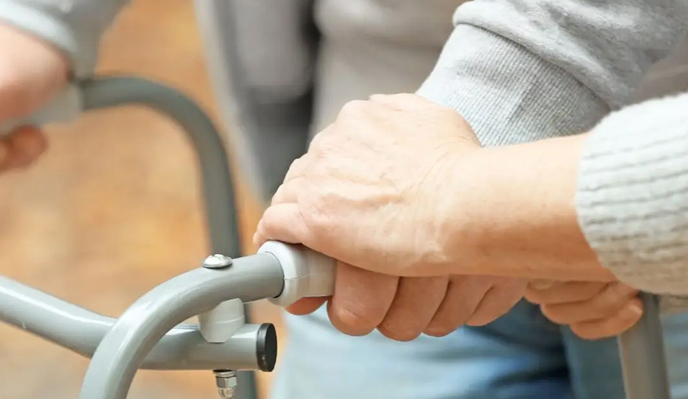Specialized Occupational Therapy Services
Occupational therapy is a healthcare profession that helps individuals of all ages develop, recover, or maintain the skills needed for daily living and working. Services are aimed at enabling individuals to perform activities of daily living such as dressing, cooking, bathing, and working, and can be beneficial in various settings, including hospitals, clinics, schools, workplaces, and homes.
Upper Extremity Assessment and Hand Therapy

Hand therapy focuses specifically on the rehabilitation of the upper extremities, including the hand, wrist, forearm, elbow, and shoulder. This type of therapy aims to improve or restore function, mobility, and strength in these areas, helping individuals regain the ability to perform activities of daily living and return to their prior level of function.
Our Certified Hand Therapist (CHT) will focus on strengthening exercises after an injury or surgery to regain strength in the hand and upper extremity. Hand therapists design specific exercises to target muscles and joints, progressively increasing the load and resistance as recovery advances. Our hand therapist implements techniques to enhance fine motor control, coordination, and dexterity. This is crucial for tasks such as writing, buttoning clothes, or grasping small objects.
Also for consideration is implementation of adaptive equipment and assistive devices.. This would include custom orthotics and splints: One of the primary tools hand therapists use is custom-made splints that can immobilize a joint or provide support to a weakened or injured hand. These splints help prevent further injury and can promote healing or better functionality.
Additionally, adaptive tools can be recommend to teach the use of ergonomic utensils, special grips, and utensils that allow individuals to perform tasks like eating, writing, or using a computer with less effort and pain.
Mobility Aid Assessment through the Assistive Device Program (ADP)

An assessment for an appropriate mobility aid can be completed by an occupational therapist that is a certified ADP authorizer. The assessment will take place in an individual’s home and the needs of a client are assessed on basic and essential needs for independent mobility indoors and outdoors.
The ADP authorized occupational therapists at IM-OT authorizers can assist with government funding of walkers, scooters, manual and power wheelchairs. Their expertise in collaboration with your choice of vendor and meeting your care needs will help you to obtain the safe mobilization.

Pediatric Assessment and Treatment

Our pediatric occupational therapists help children develop the skills they need to participate fully in daily activities. These activities include playing, learning, self-care (e.g., dressing, eating), and engaging in social interactions. Our therapists work with children who may face developmental delays, physical disabilities, learning disabilities, or mental health conditions that affect their ability to function in everyday life.
Common Conditions Addressed with a Pediatric occupational therapist
- Developmental Delays: Children with delays in their physical, cognitive, or emotional development often need support to catch up to typical milestones.
- Autism Spectrum Disorder (ASD): Pediatric OTs help children with autism improve sensory processing, social interactions, communication, and functional skills.
- Attention-Deficit/Hyperactivity Disorder (ADHD): OTs assist children with ADHD to manage attention, organization, and impulse control, and provide strategies for staying focused and completing tasks.
- Learning Disabilities: Children with learning disabilities (e.g., dyslexia) may need OT to improve their writing, reading comprehension, or organizational skills.
- Sensory Processing Disorder (SPD): Children who have difficulty processing sensory information may be over- or under-sensitive to sensory input. OTs use sensory integration therapy to help children regulate their responses to stimuli like sounds, textures, or lights.
- Physical Disabilities: Conditions like cerebral palsy, spina bifida, or Down syndrome may affect motor coordination, muscle strength, and mobility. OTs help children with these conditions improve their motor skills and adapt to their environment.
- Traumatic Injuries: After accidents or injuries, pediatric OTs help children recover and regain their functional abilities.
- Fine and Gross Motor Skill Delays: Issues with fine motor skills (e.g., handwriting, buttoning shirts) or gross motor skills (e.g., walking, jumping) are common in young children, and OT helps develop these skills through targeted exercises.
Vestibular Rehabilitation Therapy

Vestibular rehabilitation therapy (VRT) is a specialized form of treatment designed to alleviate symptoms caused by vestibular disorders, which affect balance and spatial orientation. The vestibular system is located in the inner ear and plays a critical role in maintaining balance. When it becomes impaired due to conditions like vertigo, dizziness, or other balance issues, VRT helps to retrain the brain and body to compensate for the dysfunction.
Our qualified and trained occupational therapist will provide VRT that typically includes:
- Head and Eye Movements: Exercises that challenge the vestibular system to improve gaze stability and reduce dizziness.
- Balance and Coordination Exercises: Activities that enhance postural control and reduce the risk of falls.
- Habituation: Exercises designed to decrease sensitivity to certain movements or environments that provoke dizziness.
- Postural Training: Techniques to improve posture and body alignment, promoting better balance.
- Walking Exercises: These aim to increase strength, coordination, and endurance.
The therapist often tailors the exercises to the specific condition, such as benign paroxysmal positional vertigo (BPPV), Meniere’s disease, or vestibular neuritis, and the severity of symptoms. VRT is especially effective when performed under professional guidance, with a progressive plan that adapts to the individual’s response to therapy.

Functional Ability Evaluation

A Functional Ability Evaluation (FAE) is an assessment used to determine an individual’s ability to perform various tasks related to daily living, work, or other specific functions. It is commonly used in a variety of contexts, including healthcare, rehabilitation, workers’ compensation, and disability evaluations.
The goal of an FAE is to assess an individual’s physical, mental, and emotional capabilities to determine if they can safely and effectively perform certain tasks. This evaluation helps professionals understand the limitations, strengths, and needs of the individual, providing valuable insights for treatment planning, vocational rehabilitation, or disability determinations.
Our occupational therapists are trained by WorkWell, the industry’s top rated training program
Mental Health & Psychosocial Innovation
Trauma-Informed Occupational Therapy
Trauma-informed occupational therapy applies the principles of trauma science to everyday occupations—helping individuals rebuild safety, stability, and meaningful participation in life after traumatic experiences. It recognizes how trauma impacts the nervous system, routines, identity, and the capacity to engage in daily activities.
Core Focus Areas:
Establishing Safety
Occupational therapy begins by creating physical, emotional, and sensory safety.
This can include:
- Reducing environmental triggers
- Developing predictable routines and expectations
- Offering choices to restore a sense of control
- Using grounding and sensory modulation strategies
- Creating therapeutic spaces that feel calm and non-threatening
Safety forms the foundation for all other therapeutic work.
Emotional Regulation
Trauma disrupts the nervous system. Occupational therapy supports clients by teaching practical, occupation-based regulation strategies, such as:
- Sensory-based calming or alerting activities
- Breathwork or paced activities
- Using meaningful occupations (art, movement, cooking, music) as self-regulation tools
- Identifying early signs of stress or dysregulation
- Creating individualized regulation toolkits
The goal is to help clients regain agency over their emotional and physiological responses.
Restoring Routines & Daily Structure
Trauma often disrupts sleep, self-care, meal routines, productivity, and social participation. Occupational therapy will help clients:
- Rebuild disrupted routines in manageable steps
- Modify environments to support consistency
- Develop habits and time-management strategies
- Reintroduce meaningful activities that support recovery
Stability in routines helps regulate the nervous system and creates a sense of predictability.
Ergonomic Assessment

An ergonomic assessment is a process used to evaluate the design of a workspace, task, or environment to ensure that it is optimized for the comfort, safety, and well-being of the individual performing the work. The goal of this assessment is to reduce the risk of musculoskeletal disorders, fatigue, discomfort, and injuries related to poor posture, repetitive movements, or improper workstation setup. Our occupational therapists are trained to assess and implement the following:
Workstation Design:
- Chair and Seating: The chair should support the lower back and allow for proper posture. It should be adjustable for height, backrest angle, and armrests.
- Desk Height: The desk should be at a height that allows the worker to maintain a neutral arm position while typing or using equipment.
- Monitor Placement: The monitor should be positioned at eye level to avoid neck strain, and the screen should be at a comfortable viewing distance to reduce eye strain.
- Keyboard and Mouse Position: These should be placed to allow the arms to remain at a relaxed, neutral angle to reduce strain on the shoulders, elbows, and wrists.
Posture:
- Seated Posture: A good ergonomic setup encourages a neutral spine position where the head, neck, and back are properly aligned.
- Standing Posture: For workers who stand, ergonomic assessments evaluate the height and positioning of surfaces, anti-fatigue mats, and footwear to minimize strain on the legs and back.
Work Tasks:
- Task Flow: Assessing how tasks are organized to avoid awkward body movements, such as excessive reaching, bending, or twisting.
- Repetitive Movements: Identifying whether tasks require repetitive motions that could lead to stress or injury, such as constant typing or lifting.
- Breaks and Rest Periods: Encouraging the incorporation of regular breaks or task rotation to reduce fatigue and muscle strain.
Lighting:
- Proper lighting is essential to reduce eye strain and ensure that tasks can be performed efficiently. The lighting should be adequate and positioned to minimize glare on screens or work surfaces.
Environmental Factors:
- This includes factors like noise levels, temperature, and air quality, which can impact concentration, comfort, and productivity.


